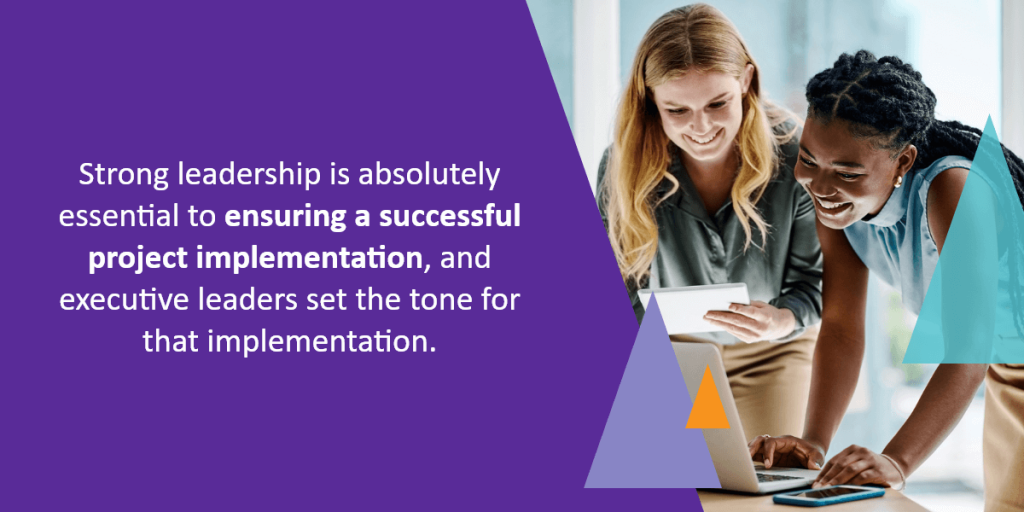




One of the key factors in creating a long-lasting improvement on your campus is learning how to understand your data and improve processes. The right technology can make these improvements much easier and uncover key insights to aid your continuous improvement efforts — but only if the technology is implemented correctly. Read on to learn how to make your technology implementation successful.
Higher ed technology often relies on the context in which it is placed. If data has been obscured or isn’t robust enough, the technology is likely to produce results that are inaccurate. To avoid this fate, leadership must commit to seeing the project through to the end.
Strong leadership is essential for successful tech implementation. An institution’s president and executive leadership team first and foremost need to have a deep understanding and appreciation for the role that a technology initiative has within the institution. This helps to create space for the prioritization of the work that it takes to secure a successful outcome.
Executive leadership seeking to successfully implement new educational technology should consider the following:
Responsibility for a successful technology implementation does not, however, stop with the executive leadership team. Mid-level leaders are called upon to sustainably and continuously move implementation efforts forward. Successful technology implementation projects can often involve a year or more of intensive, focused work, followed by ongoing sustainability efforts and continuous improvement. This process heavily relies upon mid-level leaders to work in close collaboration with implementation teams to serve as the product procurement team.
Here are the qualities to look for as a mid-level leadership team to ensure successful implementation:

While educational technology can be essential to your continuous improvement efforts, ultimately it is the people — not the technology — who create change. As such, the culture of an institution has a huge impact on the quality of the technology implementation and how it is used to drive institutional improvement.
In order to foster a culture that embraces data and cross-departmental collaboration, higher ed institutions need to cultivate the following:

Before implementing a new technology program, higher ed institutions need to take the time to identify and clean up any issues in their current technology. Duplicate records, incomplete or outdated data, and inaccurate parsing of record fields from disparate systems can all slow or stall a successful implementation. Stacking new technologies onto old ones without assessing the readiness and completeness of the data can easily derail the implementation process.
Typically, IT departments are best suited to help identify any issues within the current technology and data ecosystem.
When assessing the health of a technology and data ecosystem, colleges and universities should consider the following:
Once you take all of the above considerations into account and address any issues, you may feel ready to move forward with the implementation process. The first step in the implementation process is deciding what product is best suited to meet the needs of your institution. Consider some of the most important product requirements by talking with faculty and staff that will be implicated in this change.
Since institutions need to ensure that they have both the proper data and the capability to take a high-level snapshot and draw accurate conclusions from that data, administrators often seek to have user-friendly dashboards.
Administrators and leadership teams often seek technologies that have:
When all impacted parties across a college or university are engaged with the implementation process, collaboration and data collection become more streamlined. The efforts to successfully implement a new technology program from the get-go can help to ensure that your institution successfully adopts the new software solution, leading to better data and more robust insights.






























































































































































































































































































































































































Submit this form to schedule a meeting with one of our reps to learn more about our solutions. If you need customer support instead, click here.

